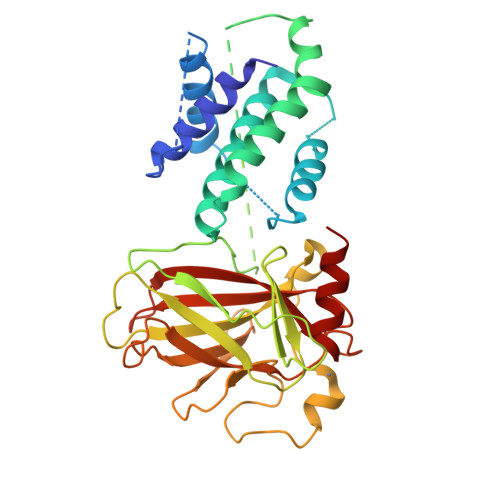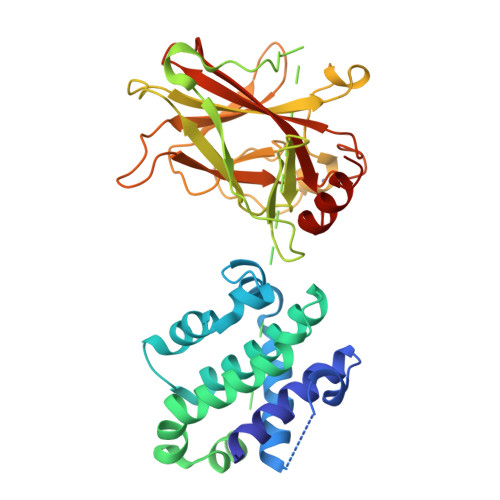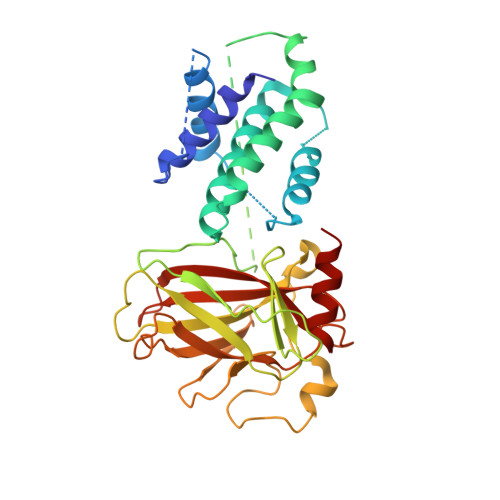Structural insight into the molecular mechanism of p53-mediated mitochondrial apoptosis.
Wei, H., Qu, L., Dai, S., Li, Y., Wang, H., Feng, Y., Chen, X., Jiang, L., Guo, M., Li, J., Chen, Z., Chen, L., Zhang, Y., Chen, Y.(2021) Nat Commun 12: 2280-2280
- PubMed: 33863900
- DOI: https://doi.org/10.1038/s41467-021-22655-6
- Primary Citation of Related Structures:
6LHD - PubMed Abstract:
The tumor suppressor p53 is mutated in approximately half of all human cancers. p53 can induce apoptosis through mitochondrial membrane permeabilization by interacting with and antagonizing the anti-apoptotic proteins BCL-xL and BCL-2. However, the mechanisms by which p53 induces mitochondrial apoptosis remain elusive. Here, we report a 2.5 Å crystal structure of human p53/BCL-xL complex. In this structure, two p53 molecules interact as a homodimer, and bind one BCL-xL molecule to form a ternary complex with a 2:1 stoichiometry. Mutations at the p53 dimer interface or p53/BCL-xL interface disrupt p53/BCL-xL interaction and p53-mediated apoptosis. Overall, our current findings of the bona fide structure of p53/BCL-xL complex reveal the molecular basis of the interaction between p53 and BCL-xL, and provide insight into p53-mediated mitochondrial apoptosis.
Organizational Affiliation:
Department of Oncology, NHC Key Laboratory of Cancer Proteomics, Laboratory of Structural Biology, Xiangya Hospital, Central South University, Changsha, Hunan, China.




















